Roosevelt Campobello International Park
Roosevelt Campobello International Park preserves the house and surrounding landscape of the summer retreat of Franklin D. Roosevelt, Eleanor Roosevelt and their family. It is located on the southern tip of Campobello Island in the Canadian province of New Brunswick, and is connected to the mainland by the Roosevelt Memorial Bridge, at Lubec, Maine in the United States.
| Roosevelt Campobello International Park | |
|---|---|
IUCN category V (protected landscape/seascape) | |
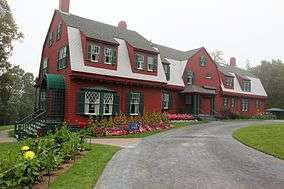 The Roosevelt cottage at Campobello (2011) | |
 Location in New Brunswick off the coast of Maine | |
| Location | Campobello Island, New Brunswick, Canada |
| Nearest city | Saint John, New Brunswick |
| Coordinates | 44°51′06″N 66°56′33″W |
| Area | 11.01 km2 (4.25 sq mi) |
| Established | July 7, 1964 |
| Governing body | Roosevelt Campobello International Park Commission |
| Website | Roosevelt Campobello International Park |
Here in August 1921, 39-year-old Roosevelt, who would go on to become the 32nd President of the United States, was stricken by a severe paralytic illness, believed to be polio at the time, leaving him permanently paralyzed from the waist down.[1]:236 FDR was no longer able to stay at the "beloved island",[2] but he sailed there in 1933 and visited briefly in 1936 and 1939.[3] Eleanor Roosevelt loved the cool summer weather and visited many times with her children and friends. Armand Hammer acquired the cottage in 1952. After Eleanor's death in 1962, Armand Hammer deeded the property to the governments of the U.S. and Canada. In 1964, they created the 2,800-acre (11 km2) International Park.[4] The cottage, built in the Shingle Style and completed in 1897, was designed by Willard T. Sears.
Description
Roosevelt Campobello International Park has a visitor centre with a gift shop and a small bilingual display on the open Canada–United States border.[5]
Administrative history
The park is owned and administered by the Roosevelt Campobello International Park Commission, created by international treaty signed by Governor General Georges Vanier, Prime Minister Lester B. Pearson, and President Lyndon B. Johnson on January 22, 1964. The park was established on July 7, 1964. Both countries provide financial support to the park. It is an affiliated area of Parks Canada and of the U.S. National Park Service.
Charter members of the board of the international commission included U.S. Senator Edmund S. Muskie, Franklin Delano Roosevelt, Jr., and Lubec, Maine, resident Sumner T. Pike.[6]
See also
- Sunrise at Campobello, 1958 play
- Sunrise at Campobello, 1960 film
- Franklin D. Roosevelt's paralytic illness
Gallery
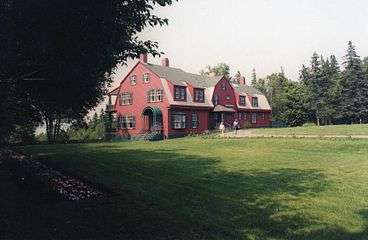 The Roosevelt cottage, a wedding gift from Sara Delano Roosevelt
The Roosevelt cottage, a wedding gift from Sara Delano Roosevelt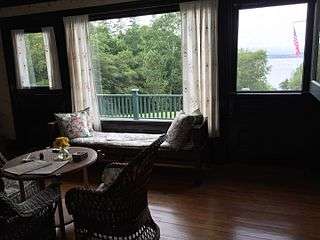 Main room
Main room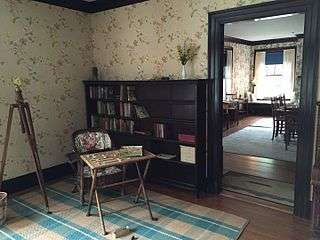 Interior
Interior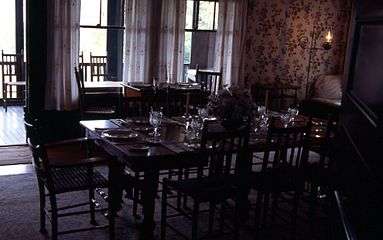 Dining room
Dining room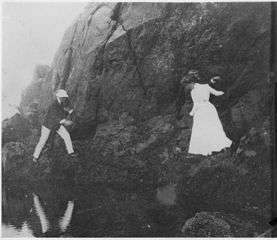 Franklin Roosevelt climbing rocks with friends (1902)
Franklin Roosevelt climbing rocks with friends (1902)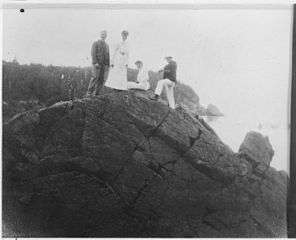 Franklin Roosevelt with friends (1902)
Franklin Roosevelt with friends (1902)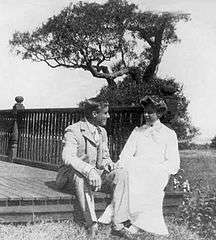 Franklin and Eleanor Roosevelt (1904)
Franklin and Eleanor Roosevelt (1904)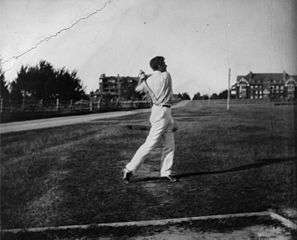 FDR playing golf (1904)
FDR playing golf (1904)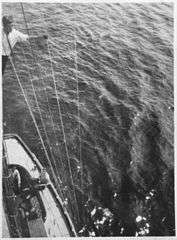 FDR on the Half Moon (1906)
FDR on the Half Moon (1906)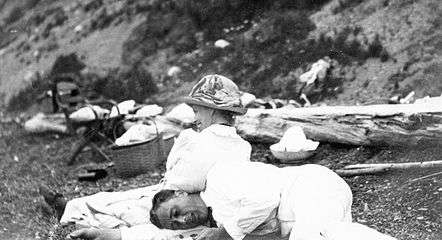 Franklin and Eleanor Roosevelt (1910)
Franklin and Eleanor Roosevelt (1910)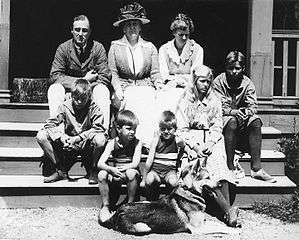 The Roosevelt family (1920)
The Roosevelt family (1920)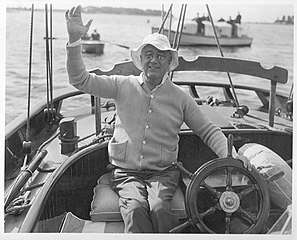 FDR sailing to Campobello (1933)
FDR sailing to Campobello (1933)
References
- Ward, Geoffrey C.; Burns, Ken (2014). The Roosevelts: An Intimate History. New York: Alfred A. Knopf. ISBN 9780307700230.
- Roosevelt, Eleanor (August 10, 1962). "My Day". The Eleanor Roosevelt Papers Project. Department of History, The George Washington University. Retrieved 2015-09-26.
- "FDR and Campobello". Roosevelt Campobello International Park. Retrieved 2015-09-27.
- Stephen O. Muskie, Campobello: Roosevelt’s Beloved Island (1982)
- "Chapter 1: Eastern Maine". United Divide: A Linear Portrait of the USA/Canada Border. The Center for Land Use Interpretation. Winter 2015.
- Two articles by Donald R. Larrabee, one each from Bangor Daily News and Maine Sunday Telegram, entered in Congressional Record – Senate, June 10, 1975, page 18115, by Sen. Edmund Muskie, in Bates College Muskie archives.
- The National Parks: Index 2001-2003. Washington: U.S. Department of the Interior.
External links
| Wikimedia Commons has media related to Roosevelt Campobello International Park. |
| Wikimedia Commons has media related to Franklin D. Roosevelt on Campobello Island. |

